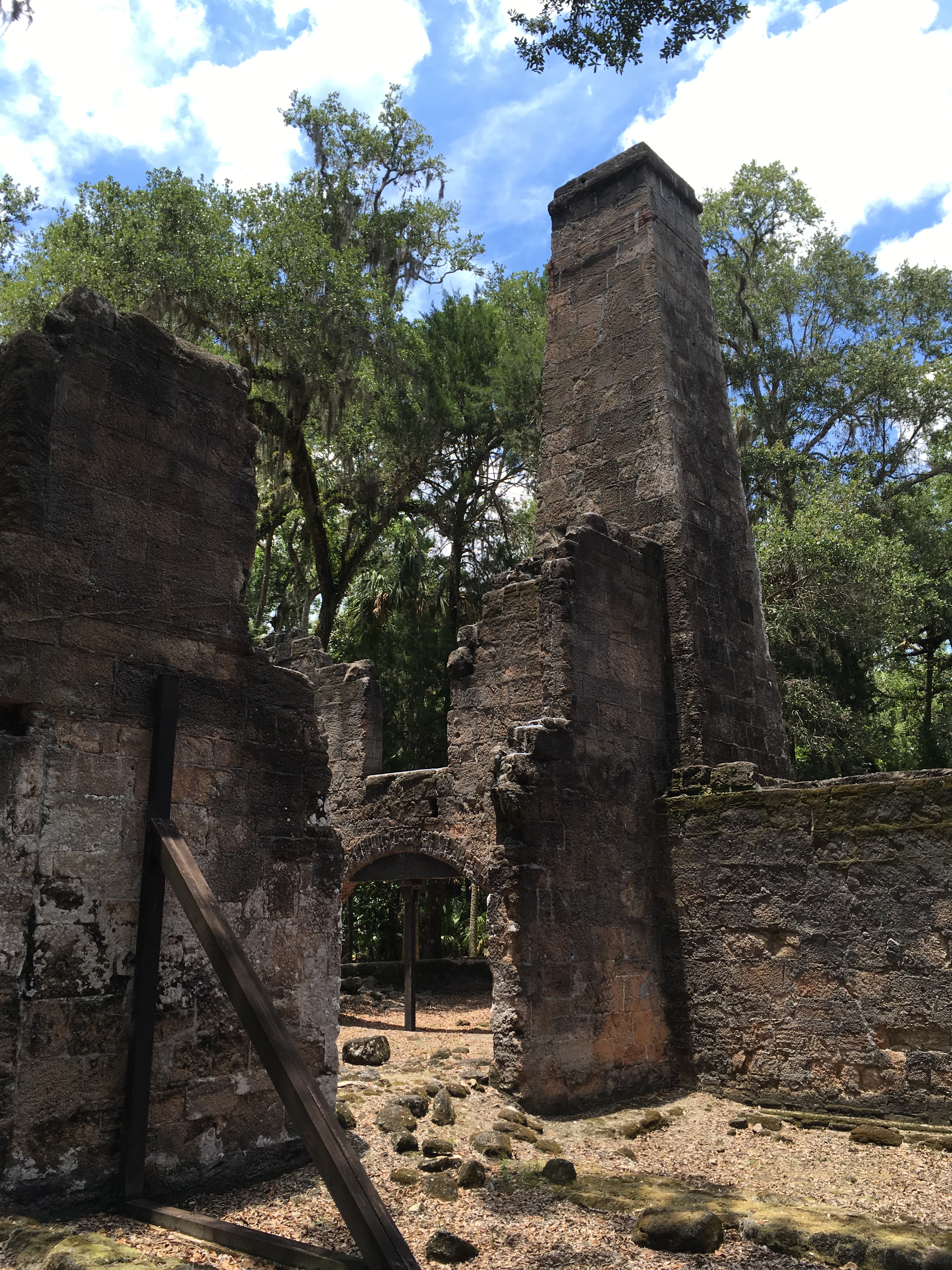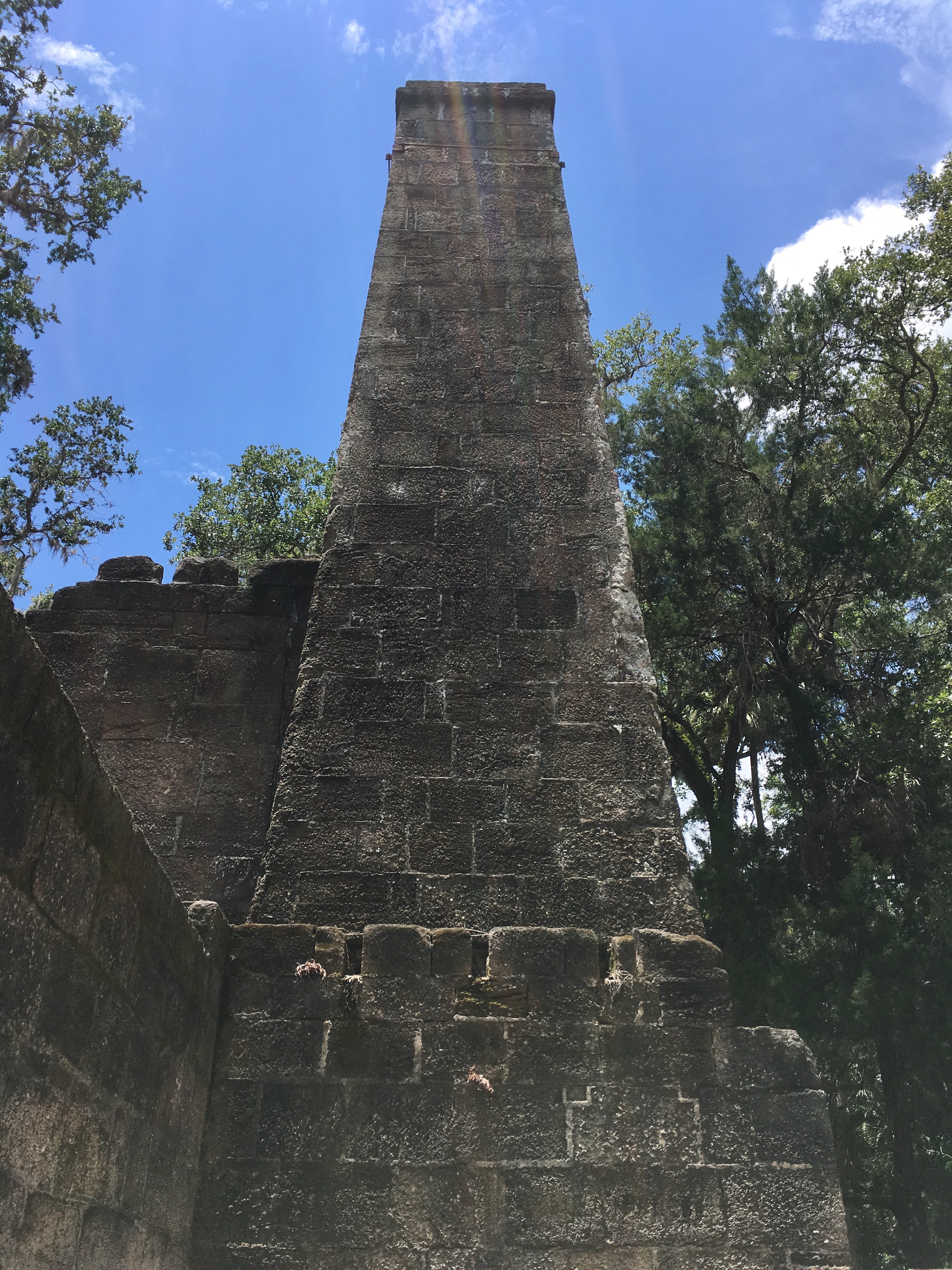As a part of Norm Frampton’s Thursday Doors I wanted to take a cue from my friend Dan at No Facilities and try a bit of history with today’s submission to the weekly prompt.
One of my favorite things to do is visit ruins, old buildings and sites of historical importance. I try to feel what might have once been there-the people, the activity, emotion, motion and life that existed before me. Or, if one is to accept Quantum Physics, something which may be occurring alongside us yet we are unable to see it throught the veil of our current creation. But…that’s another post.
As part of my birthday wish list I wanted to go to one of my favorite places, one of the plantation ruins in Flagler. It is managed and run by the Florida State Parks services and except for the brand new big highway sign, it might be easily missed, as the entrance is located at the end of a narrow dirt road which ends at a creek before you turn down a lovely tree lined road that winds around to the site.
Jerry was really excited about the outing. The road to Flagler is a lovely drive, with many hiking trails and the Tomoka State Park along the way. But we didn’t stop for those this time.
I never realized before finding so many sugar mill ruins what a huge player the state was in sugar cane and sugar production.
(All historic facts are direct quotes from Wikipedia’s account of Bulow Plantation)
Bulow Plantation Ruins Historic State Park is a Florida State Park in Flagler Beach, Florida. It is three miles west of Flagler Beach on CR 2001, south of SR 100, and contains the ruins of an ante-bellum plantation and its sugar mill, built of coquina sedimentary rock, made up of crushed shells. It was the largest plantation in East Florida.[2]
The facts are interesting of course, but I come for the aesthetic value. The look, the feel of old coquina, imagining life in another time.




The plantation was developed beginning in 1821 by Major Charles Wilhelm Bulow, who acquired 4,675 acres on a tidal creek (later Bulow Creek). With slave labor, he cleared 2,200 acres for the cultivation of commodity crops: indigo, cotton, rice, and sugarcane. At his death in 1823, his seventeen-year-old son, John Joachim Bulow inherited the property and managed it. At Christmas 1831 into January 1832, Bulow hosted the artist and naturalist John James Audubon, who explored the area in his continuing study of American birds.[2][3] About that time, Bulow had a sugar mill constructed on his property. The plantation was destroyed in the Seminole War of 1836.[2]
The property and ruins were acquired by the State of Florida in 1945 and dedicated as a State Historic Park in 1957. It was added to the National Register of Historic Places on 29 September 1970.[2]
The plantation was burned during the Seminole wars.
Okay so there are doors, just not complete ones any longer. These doorways leave much to the imagination and I have imagined lots. There are a few hiking trails leading from the main structure as well as an information museum with interesting artifacts.

Yeah, I know it isn’t a door but a window. I just loved that I saw my reflection from nearly 40 yards away. Cool huh?
As always the little creatures catch my eye, the only inhabitants of this once bustling plantation. Their ancestors could certainly tell tales…..

I hope you enjoy the rest of my photos in the slide show below. You can tap any photo to pause and see a larger image. My sincere apologies for my very late entry!
The only thing I love more than ruins is the ancient trees.

Oh yeah…we were celebrating my birthday so we had a visit to one of our favorite bar and grill places for food and drinks. And one more door…..
I just loved that sign….lol. What a beautiful day it turned out to be.













You must be logged in to post a comment.